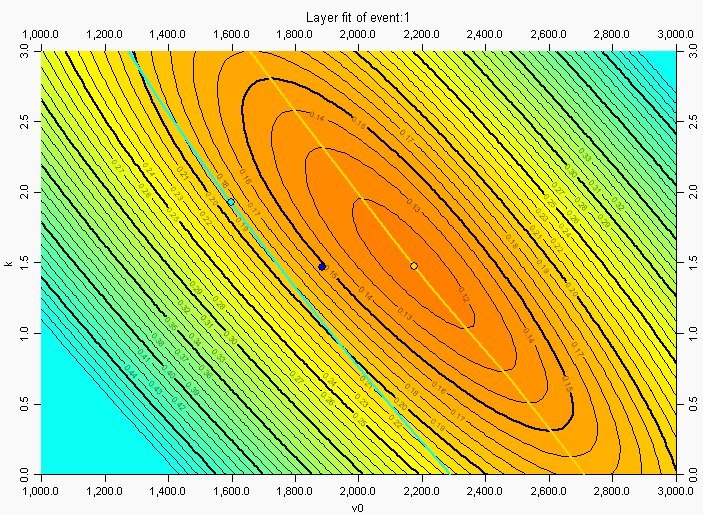In the dynamic world of oil and gas exploration, accurate subsurface mapping is crucial for successful hydrocarbon discovery and extraction. Depth conversion, the process of translating seismic time data into accurate depth models, plays a vital role in this endeavour. Over the years, the development of depth conversion calculator techniques have significantly advanced, enabling more precise subsurface imaging and better decision-making in exploration and production activities.
Table of Contents
Understanding Depth Conversion
Depth conversion formula is the process of converting seismic reflection data, typically recorded in two-way travel time (TWT), into true vertical depth (TVD) measurements. This conversion is essential because seismic data, recorded as time reflections, must be accurately translated into depth to locate, and exploit hydrocarbon reservoirs.
The Depth Conversion Process
Seismic Data Acquisition:
The process begins with the acquisition of seismic data through surveys, where seismic waves are generated and their reflections from subsurface layers are recorded. This data is initially recorded in time.
Velocity Modelling:
A crucial step in depth conversion is the creation of velocity models. These models describe the speed at which seismic waves travel through different subsurface layers. Accurate velocity models are essential for reliable depth conversion.
Time-to-Depth Conversion:
Using the velocity models, seismic time data is converted into depth. This involves applying mathematical algorithms and techniques to transform the travel time of seismic waves into true vertical depth measurements.
Calibration and Validation:
The converted depth data is calibrated and validated using well data and other geological information. This ensures that the depth models are accurate and reflect the true subsurface conditions.
The Evolution of Depth Conversion Techniques
Early Methods:
In the early days of seismic exploration, depth conversion was relatively simplistic, often involving basic linear velocity models. These early methods provided a rough approximation of subsurface structures but lacked the accuracy needed for detailed reservoir characterization.
Introduction of Layer Cake Models:
As exploration techniques advanced, the industry adopted layer cake models, which assumed constant velocities within each geological layer. While an improvement over earlier methods, these models still had limitations, particularly in complex geological settings.
3D Seismic Data and Advanced Velocity Modelling:
The advent of 3D seismic data revolutionized depth conversion. With more detailed and accurate seismic data, the development of sophisticated velocity modelling techniques became possible. Methods such as interval velocity modelling and geostatistical approaches allowed for more precise depth conversion, accounting for lateral and vertical variations in subsurface properties.
Integration of Well Data:
The integration of well data into depth conversion processes marked a significant advancement. By calibrating seismic data with well logs and other borehole information, geoscientists achieved higher accuracy in depth models, leading to more reliable reservoir predictions.
Modern Techniques and Machine Learning:
In recent years, machine learning and advanced computational techniques have further enhanced depth conversion. Machine learning algorithms can analyse vast amounts of seismic and well data to create more accurate and predictive velocity models. This has led to improved subsurface imaging and more efficient exploration and production strategies.
Importance in the Oil and Gas Industry
Accurate Reservoir Mapping:
Depth conversion is essential for accurate reservoir mapping. By providing precise depth measurements, it enables geoscientists to delineate reservoir boundaries, identify potential drilling targets, and estimate hydrocarbon volumes more accurately.
Improved Drilling Decisions:
Accurate depth models guide drilling decisions, reducing the risk of drilling dry wells, or encountering unexpected geological hazards. This enhances the efficiency and cost-effectiveness of drilling operations.
Enhanced Reservoir Characterization:
Depth conversion allows for detailed characterization of reservoirs, including the identification of faults, fractures, and other geological features. This information is crucial for optimizing production strategies and enhancing recovery rates.
Risk Mitigation:
By providing a clear and accurate picture of subsurface conditions, depth conversion helps mitigate geological risks. This is particularly important in complex geological settings where traditional seismic interpretation may be insufficient.
Economic and Environmental Benefits:
Accurate depth conversion leads to more efficient exploration and production activities, minimizing the environmental footprint and reducing operational costs. By improving the precision of subsurface imaging, companies can achieve better resource management and sustainability.
The development of depth conversion techniques has been instrumental in advancing the oil and gas industry’s ability to explore and exploit hydrocarbon resources. From early linear models to modern machine learning algorithms, the evolution of depth conversion has significantly improved the accuracy and reliability of subsurface mapping. As the industry continues to face complex geological challenges, the importance of precise depth conversion cannot be overstated. It remains a cornerstone of successful exploration and production, driving efficiency, reducing risks, and contributing to the sustainable development of global energy resources.
By continually refining and integrating advanced depth conversion techniques, the oil and gas industry can navigate the complexities of subsurface exploration with greater confidence, ensuring the responsible and efficient development of energy resources for the future.





